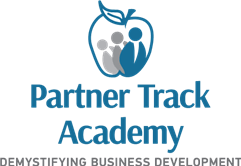Embracing the Issue/Action/Impact Formula
These three little words, issue/action/impact, may be the most important words any professional services provider, sales executive, or marketing leader can champion. I first heard them used together by my mentor at one of the Big Four accounting firms in the mid-90s. My boss, the late, great Steve Doyle who led regional marketing and business development operations, impressed upon me the importance of utilizing this formula to define client issues and challenges, highlight appropriate service solutions to meet those challenges, and espouse the monetary or risk-mitigating benefits said solutions provide. Think about it. This is what selling boils down to and in today’s market where buyers are highly informed and have access to so much information, they’ll appreciate this kind of succinct, holistic approach.
More...

I successfully sold ad valorem tax services for an international law firm for many years before meeting Steve and had, on a more convoluted level, been using a similar tactic, but it wasn’t nearly as powerful or versatile as this model. By versatile, I mean you can easily use this formula to translate all value propositions, in all industries, in written or verbal form, with clarity. Let’s begin with proposals. If an executive summary contains a nicely designed chart listing the client’s challenges next to specific solutions and benefits, the buyer will know very quickly that you understand their business and industry, have answers, and are truly bringing value.
This formula, in various formats, can be used for all collateral. What good is a client alert in any specific industry if you haven’t defined an urgent need, have not spelled out possible actions, or listed the advantages of taking action. You can also use this formula to determine whether an alert should even be distributed. If there is not an urgent challenge on the horizon and no solutions have been crafted, you may be diluting your own content marketing strategy by sending clients and prospects material they have no reason to read.
The issue/action/impact formula is also critical to the success of a client team or client clinic program. When carefully examining the client’s operations and business imperatives through the eyes of assorted service providers, a robust opportunity analysis can be developed with input from various perspectives. The client will benefit from expert points of view, learning about emerging issues and possible solutions before they become larger problems. The formula can be a basis for a client team launch and can be adjusted or modified periodically as the client changes and new regulatory and compliance issues emerge.
And what about that ever-dreaded elevator pitch? I have seen so many accountants and lawyers struggle to create a conversational, brief, elevator speech. Stop obsessing and think instead of how you can incorporate the issue/action/impact formula into a first-time meeting with a potential client. You’ll be ahead of the game if you listen carefully to who they are and can bring up common ground. For instance, let’s say you are a trademark attorney and you meet a chief technology officer for a food and beverage company. You could mention a high profile matter (even if it is in a different industry) regarding employee theft of intellectual property and comment that the case could have been easily avoided. Now you have an issue on the table and have made a statement that should prompt questions about solutions. You can briefly mention actions any company can take to protect intellectual property then mention this is your passion, to help companies stay out-of-court and reap the full benefits of their assets. You’ve now helped define yourself by discussing an issue, mentioning helpful actions, and explaining how you enjoy impacting operations in a positive way.
No matter the project at hand, I often turn to the issue/action/impact formula to see how it can help me or my clients. I am lucky to have had a mentor who could walk me through various scenarios for which the formula proved beneficial. I can say with pure conviction that Steve Doyle benefited his firm and the employees in his department by imparting this knowledge. He told me how he applied the formula to his own role because he saw an issue (how can non-CPAs help CPAs sell services), thought about solutions (provide a methodology that can simplify sales), and knew there’d be benefits (increased wins and happier, more loyal clients).
Brenda Pontiff founded Partner Track Academy after years of watching young accountants and lawyers panic over business development expectations related to making partner. She received her master’s degree in speech communications and has worked in the legal and accounting arenas, both in-house and as a consultant, for more than 25 years. She’s also worked as a professional stand-up comic, writer and actress, as well as an adjunct professor for the University of Houston-Downtown. Brenda brings to bear a unique blend of skills perfect for engaging, training, and shifting the mindsets of professional service providers who need to embrace a successful business development process.




